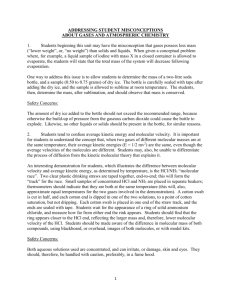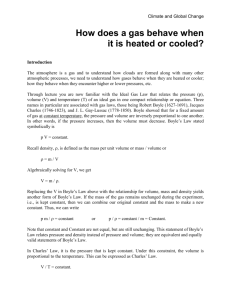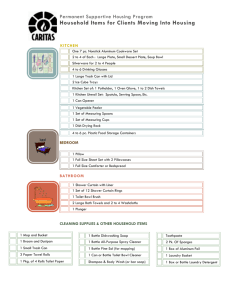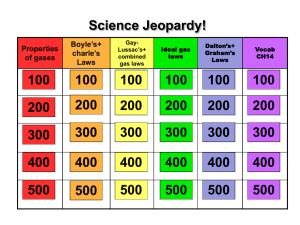What is the difference between solids, liquids and gases?
advertisement
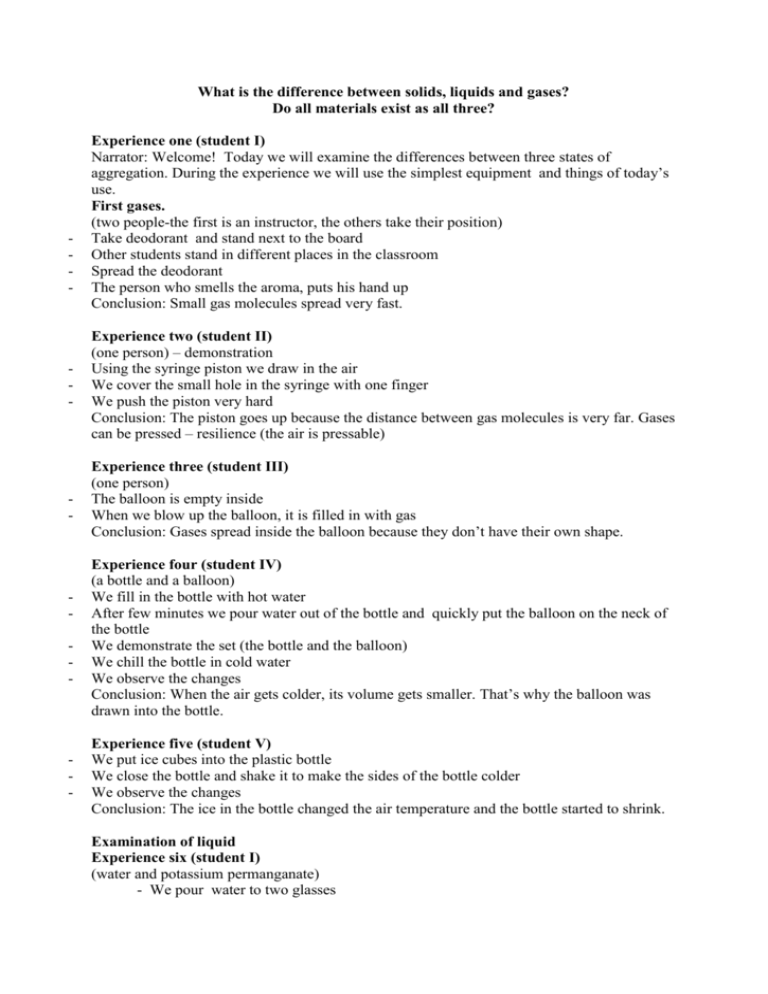
What is the difference between solids, liquids and gases? Do all materials exist as all three? - - - - - Experience one (student I) Narrator: Welcome! Today we will examine the differences between three states of aggregation. During the experience we will use the simplest equipment and things of today’s use. First gases. (two people-the first is an instructor, the others take their position) Take deodorant and stand next to the board Other students stand in different places in the classroom Spread the deodorant The person who smells the aroma, puts his hand up Conclusion: Small gas molecules spread very fast. Experience two (student II) (one person) – demonstration Using the syringe piston we draw in the air We cover the small hole in the syringe with one finger We push the piston very hard Conclusion: The piston goes up because the distance between gas molecules is very far. Gases can be pressed – resilience (the air is pressable) Experience three (student III) (one person) The balloon is empty inside When we blow up the balloon, it is filled in with gas Conclusion: Gases spread inside the balloon because they don’t have their own shape. Experience four (student IV) (a bottle and a balloon) We fill in the bottle with hot water After few minutes we pour water out of the bottle and quickly put the balloon on the neck of the bottle We demonstrate the set (the bottle and the balloon) We chill the bottle in cold water We observe the changes Conclusion: When the air gets colder, its volume gets smaller. That’s why the balloon was drawn into the bottle. Experience five (student V) We put ice cubes into the plastic bottle We close the bottle and shake it to make the sides of the bottle colder We observe the changes Conclusion: The ice in the bottle changed the air temperature and the bottle started to shrink. Examination of liquid Experience six (student I) (water and potassium permanganate) - We pour water to two glasses - - - - - To those glasses we put a pinch of potassium permanganate - We observe the changes - We mix the content only in one glass the second we leave untouched Observation: Potassium permanganate dissolved Small pieces of potassium permanganate moves in water After mixing the water the small pieces move faster than those in the second glass Conclusion: The liquid molecules move slower than the gas molecules. The mixing has a big impact on molecules moving speed. Experience seven (student II) (water and ink) We take two glasses The first glass we fill in with the cold water and the second with hot water To every glass we put one drop of ink We observe the changes Conclusion: The water molecules move all the time. The ink molecules move faster in hot water than in the cold water. Examination of solid Experience eight (student III) (heating up the metal ball) The ball goes freely through the ring We heat up the metal ball We try to move the heated ball through the ring ( the ball expanded) We cool down the metal ball Now the ball can easily go through the ring. Conclusion: The solids after heating up increase the volume because the distance between molecules gets bigger. Experience nine (student IV) (heating up the metal bar) To the container we pour the methylated spilit We put it on fire We observe the changes Conclusion : The metal bar got longer. While heating up the solids their molecules get longer. Summing up: There is a lot of differences between solids, liquids and gases. We think that we have proved it to you.



